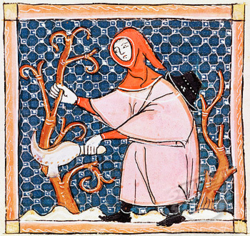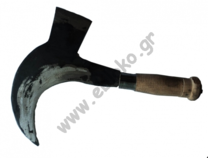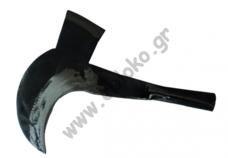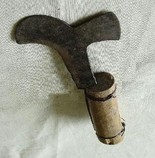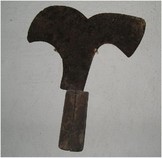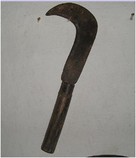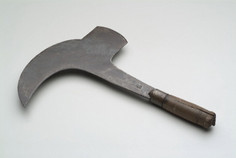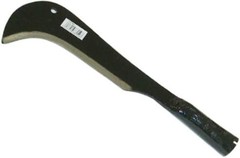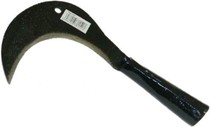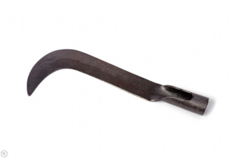More modern kladeuterion & kosora
The modern Greek κλαδευτηρι 'kladeuteri' (plural: κλαδευτηριων 'kladeuterion') have similar shapes to the earlier ones. The common form is that of double edged tool: a sickle blade with an axe like blade at the back. The sickle blade is pulled towards the user, and unlike an English billhook, is all beak with little or no blade parallel to the axis. The axe blade is use for cutting old dead wood, and is used away from the user with a chopping action. This type of blade spread to most of the regions of the Mediterannean that were former colonies of Ancient Greece, especially those of southern Italy and Sicily.
The κοσόρα 'kosora' are single bladed, usually socket handled, billhooks that are used for more general work such as trimming trees or hedges - they may be used with or without a short inserted wooden handle, or fitted to a longer one c.f. the English slasher.
